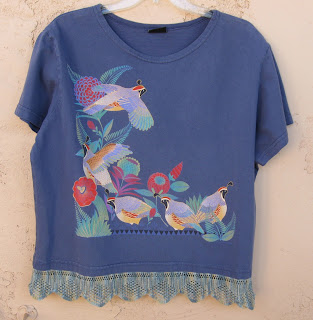 |
| "Handsome Shawl" Pattern in Victorian Lace Today by Jane Sowerby |
 |
| Cat paw motif |
Reading Lace Knitting Charts
- Each square in the chart represents one stitch.
- Start at the bottom right square - row 1, column 1. Read across from right to left just like knitting a row.
- If knitting in the round continue to read from right to left. In flat knitting the back side (AKA wrong side) has to be read from left to right - the reverse of the right-side.
- In most charts the right-side rows are numbered on the right side of the chart starting with 1. Row 2 is on the back side of the knitting and numbered on the left side of the chart and read from left to right.
- Important note and good news: Many lace patterns have a "rest" row - a knit or purl back row with no yarn-overs or decreases. Lace charts may or may not include these rows. When these rows are omitted from the chart, there will be only one set of numbers usually on the right side and generally the odd numbers.
 |
| Even rows are not included in chart. Knit all even rows. |
Are you ready to knit some lace? Here is a simple lace edging to try. Lace edgings are a great place to start. The pattern is repeated so many times you will soon memorize it. Notice the rhythm of the lace and begin to "read" the knitting - how the yarn-overs and decreases relate to the ones below. Knitting lace will be easy for you then.
Lace edgings are great fun to add to clothing, tea towels, pillow cases, purses. This edging was knit with a silk yarn and added to a Sabaku T-shirt by sewing the straight side of the knitted lace to the bottom of the shirt with a simple whip stitch by hand. Have fun knitting this edging or try the cat's paw motif. The key works with both charts.
Next blog - cast-ons, tips and tools for knitting lace.

